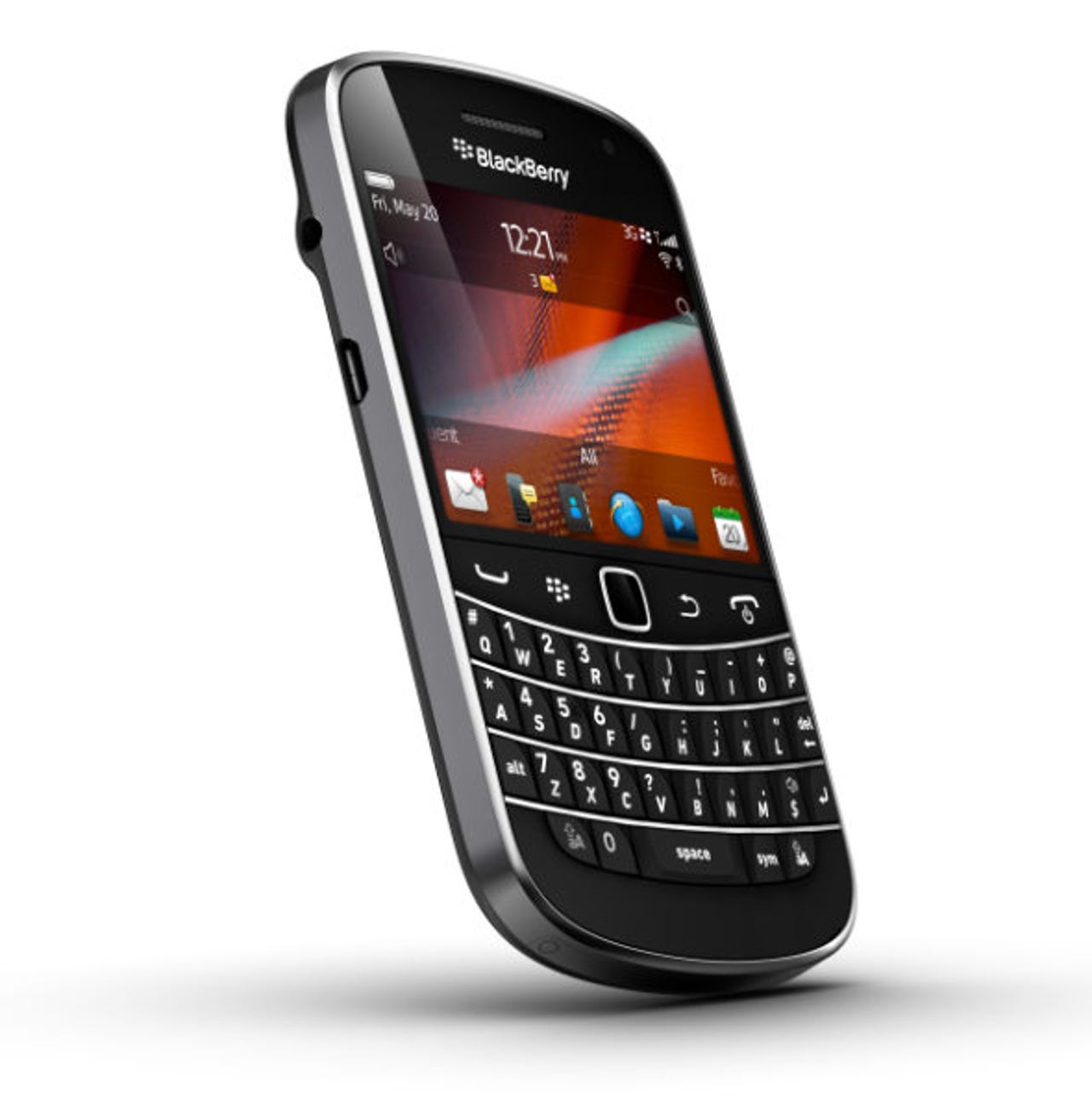Photos: Chrome OS' new home, library's robot reboot and fresh Apple iMacs


BlackBerry Bold 9900 handset
Photos of the month - May 2011
Last month saw a number of new hardware releases from some of tech's biggest names.
Among them was BlackBerry maker RIM, which announced a hybrid touch-Qwerty smartphone - the BlackBerry Bold 9900 - at its BlackBerry World user conference.
As well as a full Qwerty and a capacitive touchscreen, the BlackBerry Bold 9900 includes near-field communications (NFC) - a short-range wireless technology used for contactless payments and mobile ticketing.
For more on the BlackBerry Bold 9900, see RIM's NFC BlackBerry Bold 9900.
Sony Ericsson Xperia mobile phone
Mobile maker Sony Ericsson also announced new additions in June, refreshing its Xperia mini range with faster chips, bigger screens and Android 2.3, aka Gingerbread.
Pictured above is the Xperia mini pro, which sports a touchscreen that slides up to reveal a full Qwerty keyboard.
For more on the new handsets, see Sony Ericsson Xperia minis get less mini.
Apple iMac
Apple also tweaked an existing hardware range last month with updates to its iMac desktop computers - adding faster quad-core processors, Intel's Thunderbolt I/O high-speed data-transfer technology and a HD camera to enable HD FaceTime video-calling.
For more on the new iMacs, see Apple iMacs get Intel Thunderbolt and Sandy Bridge boost.
Samsung Chromebook Series 5 running Google Chrome OS
The first laptop to run Google's Chrome OS was also unveiled early last month.
The Samsung Series 5 Chromebook, pictured above, utilises Google web-based services in lieu of a hard drive. The lightweight laptop powers up instantly when opened and requires a Google account login to use - meaning the user's web history and apps usage is always on tap.
For more photos of the Chromebook, see Samsung Chromebook Series 5 unveiled.
Intel's first 3D transistor, Tri-Gate
May also saw Intel announce its first 3D transistor, called Tri-Gate. The chipmaker says the new design will result in performance and power improvements in its 22-nanometer Ivy Bridge chips, and enable chips to operate at lower voltage and with less energy leakage.
For more on the 3D chips, see Intel's 3D Tri-Gate transistors.
Asus Padfone
The Computex trade show kicked off in Taiwan at the end of the month, and kit maker Asus was straight out the door with the unveiling of a bevvy of mobile hardware - including the smartphone-cum-tablet concept device, pictured above.
The device, known as the Asus Padfone, is a smartphone with a tablet-style accessory that the phone plugs into to give the mobile user access to more screen real estate.
Asus also took the wraps off a new netbook and line of ultraportable laptops. For more on Asus' Computex kit, see Asus unveils Padfone, the phone-cum-tablet.
Total Recall Agent
More concept devices appeared in May, thanks to the Fujitsu Design Award competition, which put out a call for designers to dream up innovations in the theme of future computing.
The fruits of the competition included this balloon called the Total Recall Agent, created by designers Shohei Nakamura, MoonHwan Lee and YoungWook Jung of South Korea and Japan.
The concept PC records travellers' activities, using cloud computing technology to make sure everyone back home knows what the globetrotters are up to.
For more on next-gen PC designs, see Fujitsu future computing design winners.
Copenhagen Airport augmented reality iPhone app
While the Total Recall Agent focuses on the traveller of tomorrow, today's globetrotters aren't short of technology to help them on their way.
Last month, silicon.com took a look at an augmented reality iPhone app for travellers passing through Copenhagen which allows them to find information about the main terminal.
When the iPhone's camera is pointed in a certain direction, it shows points of interest such as shops and restaurants in the screen's view, as shown above.
The app was jointly developed by the Danish capital's airport, developer Novasa and air transport IT company Sita.
For more on the app, see Augmented reality iPhone app lands at Copenhagen Airport.
University of Chicago Grand Reading Room
From Europe to the US: May was the month the University of Chicago opened the doors to the Grand Reading Room of its new library.
The library features a giant glass dome reading room, uncluttered by shelves of books - all the paper is stored underground in these stacks of bins, pictured above, and a system of robotic cranes automatically retrieves items on request.
For more on the robotic library, see Robotic library picks books out of the deep.
Renewable Energy Systems RES
Also in May, silicon.com visited the head office of wind farm and renewable energy developer Renewable Energy Systems (RES), pictured above, in Kings Langley, Hertfordshire, to get a closer look at a sustainable office set-up.
The company uses an on-site wind turbine and burns biomass to generate energy. It also has a bank of solar thermal panels for heating water to keep the office warm.
For more on the RES office set-up, see Renewable energy firm's sustainable office.
alpha.gov.uk
Another photo story hitting silicon.com last month was the Cabinet Office's unveiling of an alpha prototype for a single web portal through which government online information and services can be delivered. The homepage of the alpha.gov.uk domain, shown above, features a search bar at its centre in which users can type the subject they are seeking information on.
The prototype version focuses on the top 100 most frequently asked questions to government, such as the dates of bank holidays, what the minimum wage is and how to register for VAT.
For more on the single web portal, see Prototype portal lifts lid on future of public services.